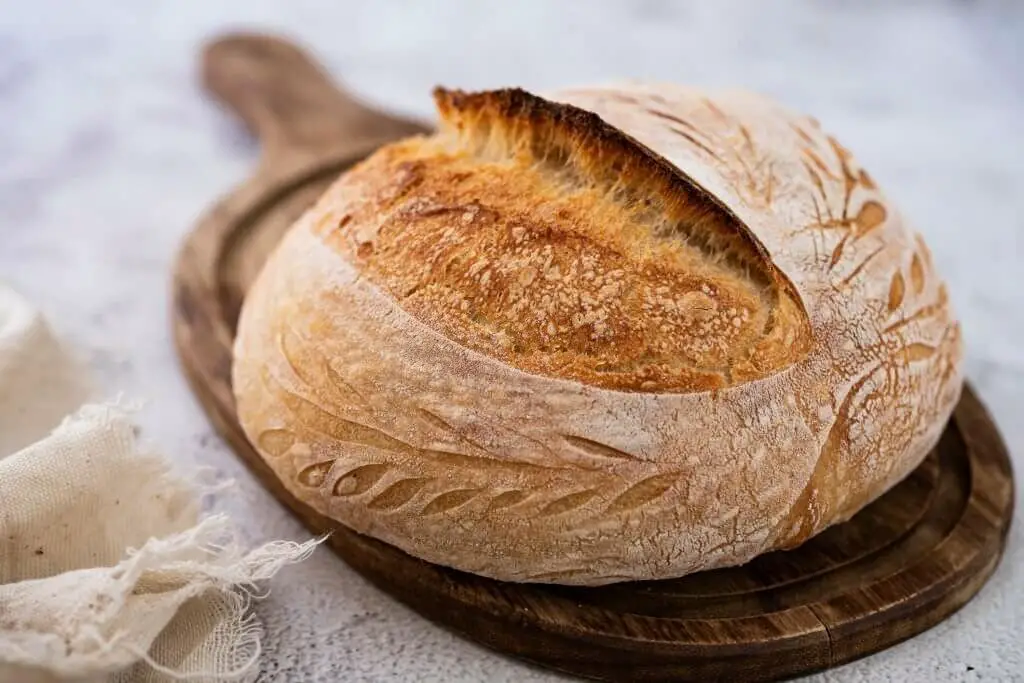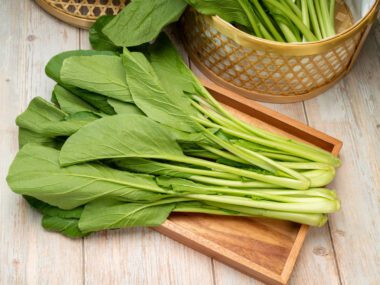If there’s one thing we can all agree on, it’s that bread is life. A good slice of bread can make or break your day. But let’s talk about two heavyweights in the world of bread – Sourdough and Peasant Bread. They might seem like your everyday bread buddies, but there’s more than meets the eye. In this ultimate bread brawl, we’re pitting Sourdough against Peasant Bread to find out which one truly rises to the occasion.
The Bread Basics
Sourdough Bread
Sourdough, my friends, is the OG of bread. It’s been around since forever, way before the fancy yeast came into the picture. You see, sourdough is all about that wild side – wild yeast, to be precise. None of that store-bought yeast nonsense. Sourdough gets its name from its tangy, slightly sour flavor. But where does that come from? It’s all thanks to a magical thing called a sourdough starter.
A sourdough starter is like the bread whisperer’s secret weapon. It’s a simple mix of flour and water that becomes a cozy home for wild yeast and lactobacillus. These little critters party it up in your starter, fermenting away and giving that distinct sourdough flavor. But hold on, this isn’t a microwave dinner; it takes time – days, in fact – for the sourdough starter to get all ripe and ready for action.
Once it’s ready, you mix it with more flour, water, and a pinch of salt to create your sourdough dough. Then, you let it rise. But here’s the kicker – sourdough takes its sweet time to rise. We’re talking slow and steady wins the race. The result? A bread that’s got layers of flavor and a crust to die for.
Peasant Bread
Now, let’s talk about the underdog in this bread brawl – Peasant Bread. It might not have the posh name or the fancy reputation, but it’s the bread of the people. Peasant bread, historically speaking, was what the everyday folks chowed down on. It was hearty, rustic, and packed a punch in the flavor department.
What sets peasant bread apart is its simplicity. It’s made from roughly ground grains, like barley, rye, and good ol’ durum wheat. The best part? No need to remove the bran and germ here; they’re part of the deal. These grains were ground using whatever means were available, which meant no fancy equipment.
Peasant bread is known for its no-nonsense, crusty exterior. It’s the kind of bread that’s chewy and heavy, perfect for hardworking folks who needed something substantial to keep them going. And here’s a little secret – some peasant breads got their rise from sourdough starters, making them a cousin to our sourdough superstar.
The Showdown – Sourdough vs. Peasant Bread
Now that we know the bread basics, it’s time to throw these contenders into the ring and see who emerges victorious.
Round 1: Taste and Texture
Sourdough: It’s all about that tangy, sour flavor. The slow fermentation gives it a depth of taste that’s hard to beat. Plus, that crust – it’s like a flavor explosion in your mouth.
Peasant Bread: This one’s a hearty contender. It’s dense, rustic, and has an earthy flavor that screams comfort food. The crust is crusty, the inside is chewy – it’s a texture party.
Winner: It’s a tie! Taste is subjective, folks. Some like it tangy, some like it earthy.
Round 2: Complexity and Time
Sourdough: Brace yourself; sourdough is no sprint; it’s a marathon. From creating that sourdough starter to letting the dough rise at a snail’s pace, it’s a labor of love that takes days.
Peasant Bread: This is the bread of the people, and it knows it. It’s simple, straightforward, and doesn’t waste time. You can have a peasant bread on your table way faster than sourdough.
Winner: Peasant Bread. When hunger strikes, you don’t want to wait for days.
Round 3: Nutritional Value
Sourdough: This is where sourdough shines. The long fermentation process not only develops flavor but also breaks down gluten and phytic acid, making it easier to digest. Plus, it’s packed with those good bacteria from the starter.
Peasant Bread: It’s hearty, no doubt, but it doesn’t have the same nutritional superpowers as sourdough. The whole grains are a plus, but it can’t match the fermentation magic of sourdough.
Winner: Sourdough takes this round for its gut-friendly qualities.
Round 4: Versatility
Sourdough: You can throw anything at sourdough – olives, cheese, herbs – and it’ll soak up those flavors like a sponge. It’s the canvas for your culinary creativity.
Peasant Bread: While it might not be as versatile as sourdough, peasant bread has its own charm. It’s the perfect partner for stews, soups, and hearty spreads.
Winner: It’s a draw! Both have their unique strengths in the versatility department.
The Verdict
So, who wins in the epic battle of Sourdough vs. Peasant Bread? The truth is, it depends on your taste buds, your schedule, and your dietary preferences.
Choose Sourdough if:
- You’re all about that tangy, complex flavor.
- You’re willing to put in the time for a bread masterpiece.
- Gut health is a top priority.
Choose Peasant Bread if:
- You crave a hearty, rustic bite.
- You need bread on the table, pronto.
- You’re looking for a budget-friendly option.
In the end, both these breads have a special place in our hearts and on our plates. Sourdough brings the sophistication, while peasant bread brings the comfort. So why choose? Embrace them both and let your taste buds decide the winner of the bread battle in your kitchen.
Next time you’re at the bakery or in your kitchen with your apron on, remember the age-old battle of Sourdough vs. Peasant Bread. And whatever you choose, savor every bite, because life’s too short for boring bread.



